Keep that cute smile and those little pearlies intact with our baby teeth chart – a complete guide to caring for your child’s teething problems.
Picture this – you’re sitting on your favorite chair, nursing your little one, listening to soft music in the background. It’s all very nice and calm till – Ouch! Your baby has just chomped on your breast announcing the arrival of her first tooth!
Factually speaking, those little teeth were already present when your baby was born, embedded within the gums. These are baby’s primary teeth, also called baby teeth or deciduous teeth. These teeth erupt from the gums starting around the half year mark, and are shed to make way for permanent teeth around 6-7 years of age. By then the facial structure of the child’s jaw will have altered to accommodate the new permanent teeth.


As we already know, children achieve their milestones at different rates, and this is even more true of teething. For most babies, the first tooth comes in at 3 months of age, but it can be anytime after that as well. In very rare cases, babies are born with erupted teeth, but these are only about 1 in 2000. Once the baby starts teething, the teeth erupt at the rate of four new teeth every six months – two in the upper arch and two in the lower arch. These are first 20 teeth a child has, the full range of baby teeth:
- Four central incisors
- Four lateral incisors
- Four first molars
- Four second molars
- Four canines
Most teeth erupt in pairs, with one on the right and one on the left. The lower teeth usually erupt first, followed by the upper teeth. Girls generally get their teeth faster than boys.
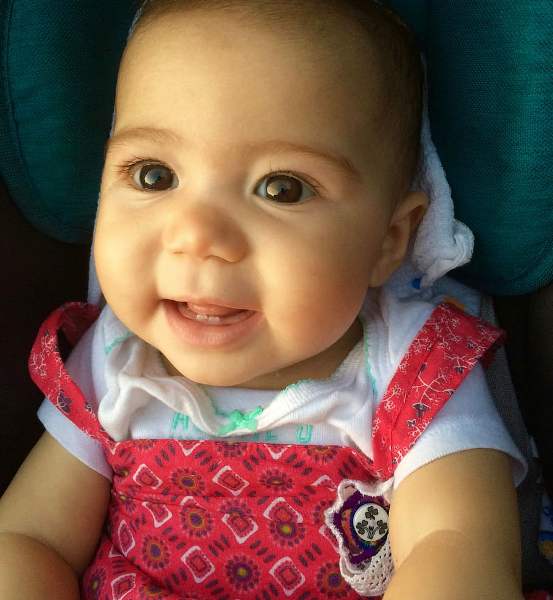
This may make it feel like baby teeth aren’t that important since they’re just temporary. This is not true; baby teeth have a very important role to play in a child’s overall growth and development. Here are some reasons why:
- Primary teeth act as place holders for the permanent teeth that come in later
- Baby teeth encourage proper speech development as well as skills like chewing and smiling
- The appearance of baby teeth in the mouth gives form to the face as the child grows
- Healthy baby teeth helps kid chew properly and eat a variety of foods, ensuring proper nutrition
- The health of the baby teeth determines the health of the permanent teeth
Now that you know how important those itty bitty baby teeth are, it’s time to understand how exactly the baby teeth come in. We’ve drawn up a full timeline of baby teeth, along with lots of tips for teething and oral care for babies.
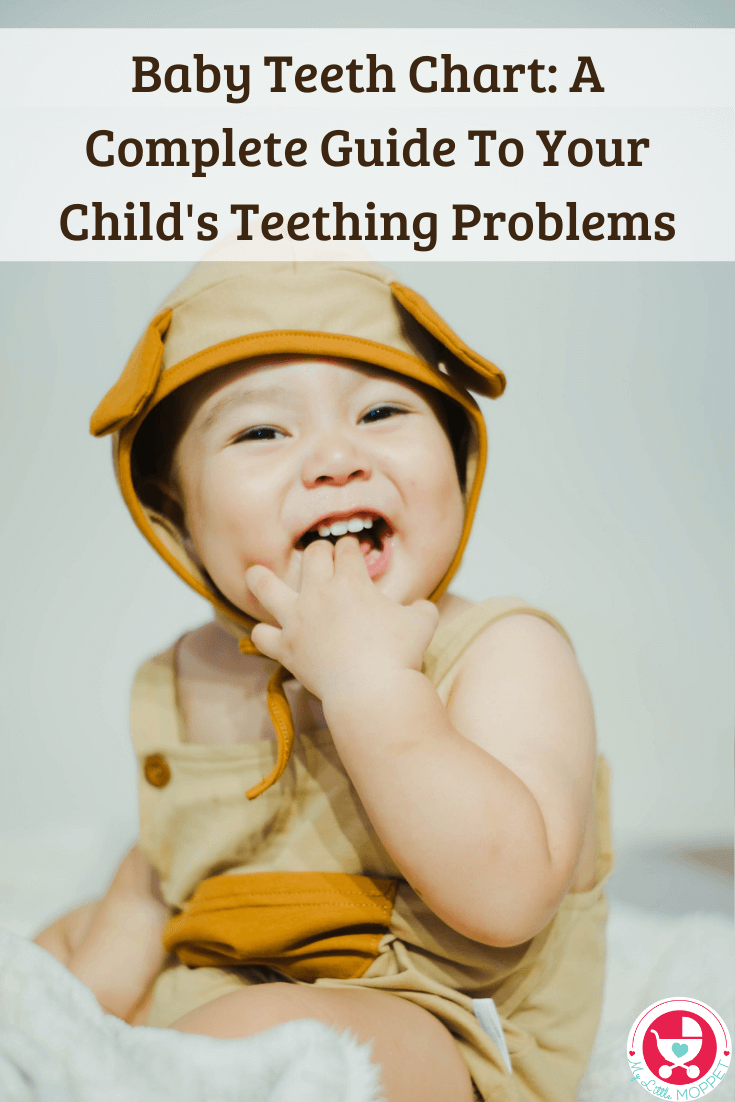
4-7 Months
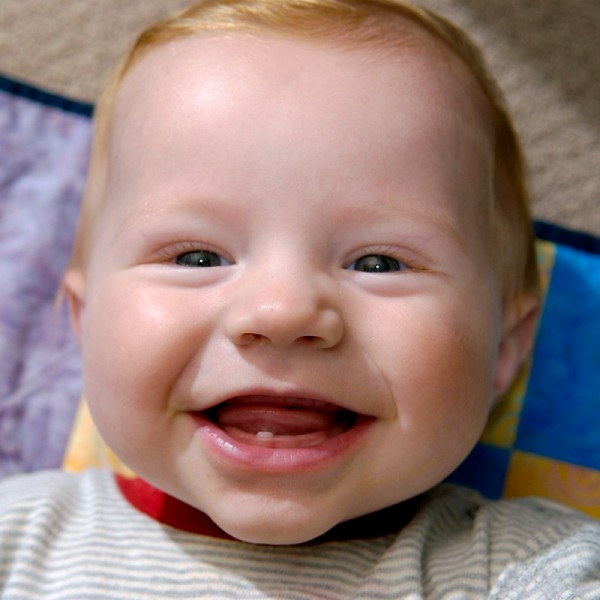
This is generally the age when teething begins, although many babies start exhibiting some discomfort around 3 months of age. They may get irritable and cranky, and may drool excessively. You may also notice them rubbing their gums with their fingers or trying to bite on something. The first tooth to erupt is the lower central incisor, one followed by the other.
8-12 Months
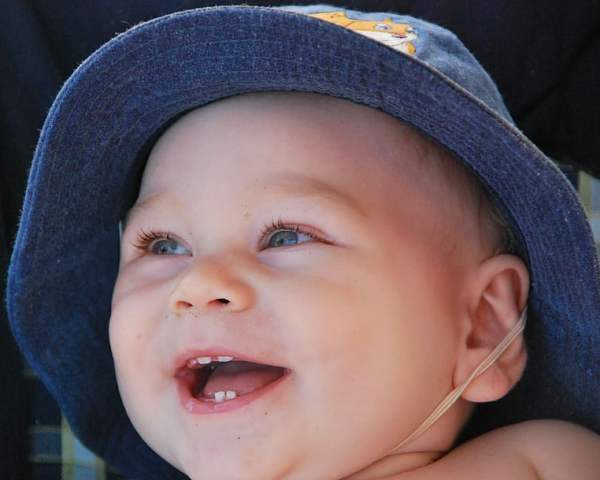
A few months after the lower incisors have erupted, the upper central incisors make an appearance. By the age of 10 months, most kids have both their upper and lower incisors out.
9-13 Months
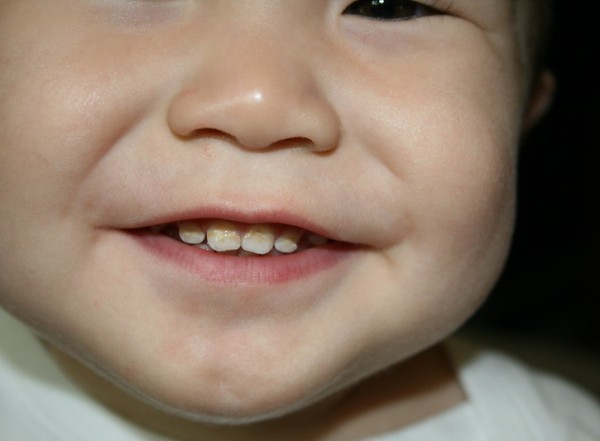
Once the central incisors are in place on both the upper and lower jaws, it’s time for the lateral incisors to come in. These are the teeth next to the central incisors that erupted earlier. This gives your baby a row of four incisors on the top and the earlier two incisors on the bottom.
10-16 Months
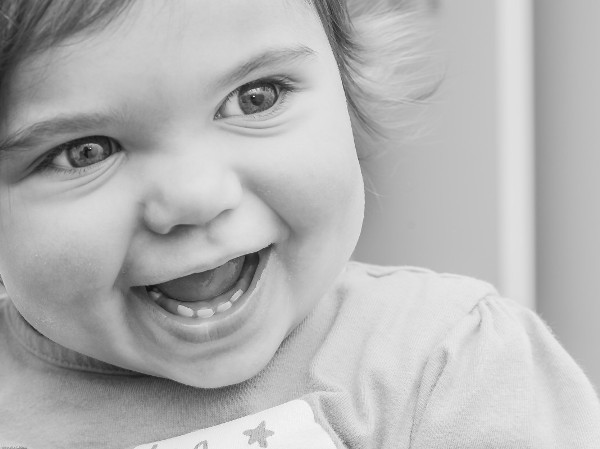
Now it’s the turn for the lateral incisors on the bottom to erupt. Your baby now has a toothier smile, with two rows of four teeth each.
12-19 Months
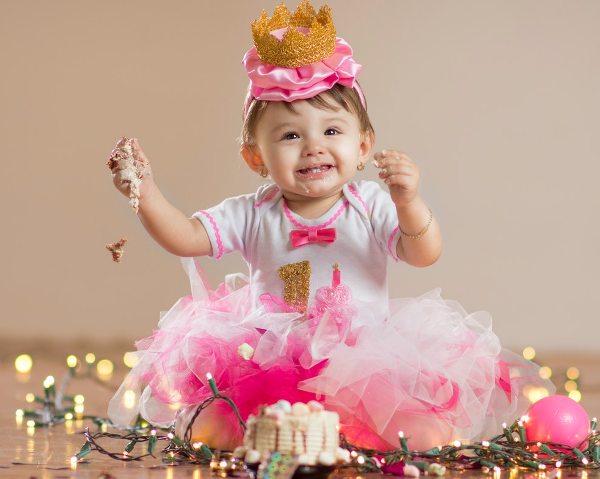
As your baby crosses her first birthday, the first molars may begin to set in, usually on the upper jaw. Since the molars are wider than the incisors, their eruption may cause some pain and discomfort, similar to when the first tooth came in.
14-18 Months
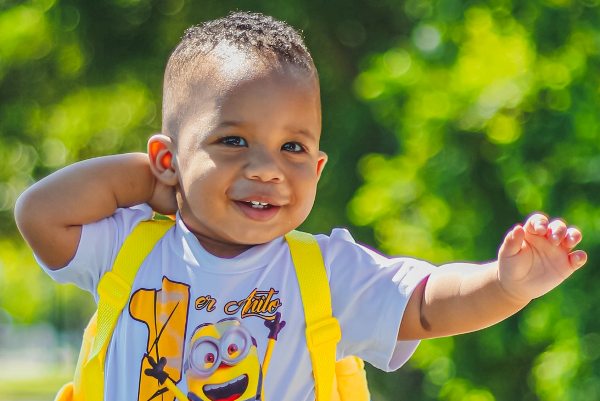
The upper molars on their own aren’t of much use, since they don’t have anything to chomp down on. That’s where the first bottom molars make an appearance, and now your little on can actually chew harder. Sometimes, the molars may erupt on one side and then on the other.
16-23 Months
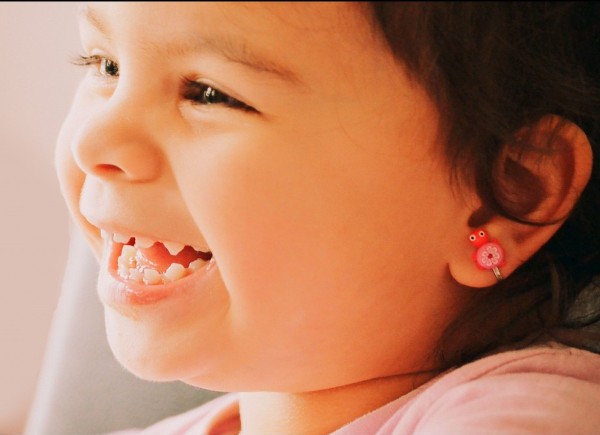
Now’s the time for the canine teeth, also called cuspids to come in. The canines erupt in the gap between the incisors and the molars. The upper canines come in first, followed by the lower canines.
23-33 Months
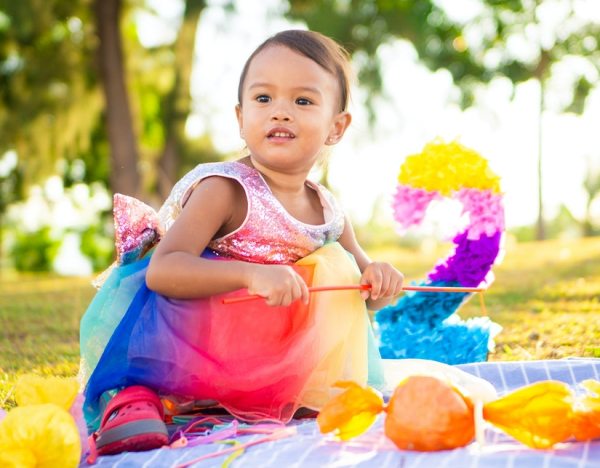
As your little one reaches her second birthday, the second molars, at the very back begin to come in. The lower molars erupt first, followed by the upper molars. By the third birthday, most children have all their 20 baby teeth.
4-6 Years

This is the age when the bones in the jaw and face develop around the baby teeth, creating space for permanent teeth and creating a proper form for the face.
6-8 Years
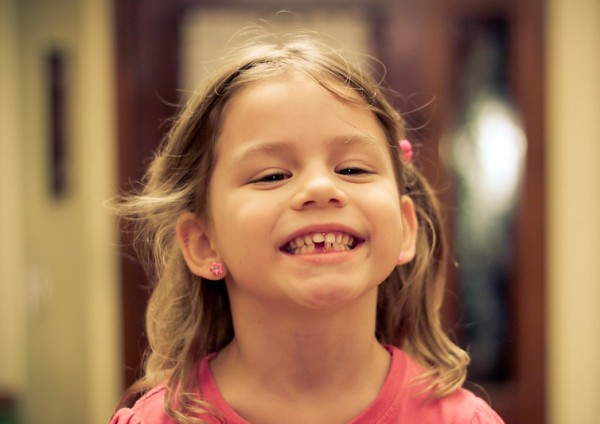
After enjoying their baby teeth for 6-7 years, it’s time to lose them! At this age, children begin to lose their teeth, and the order in which they lose teeth is random. The middle teeth fall out first, followed by the ones on the sides. If kids got their baby teeth later, they are more likely to lose them later too.
9-13 Years
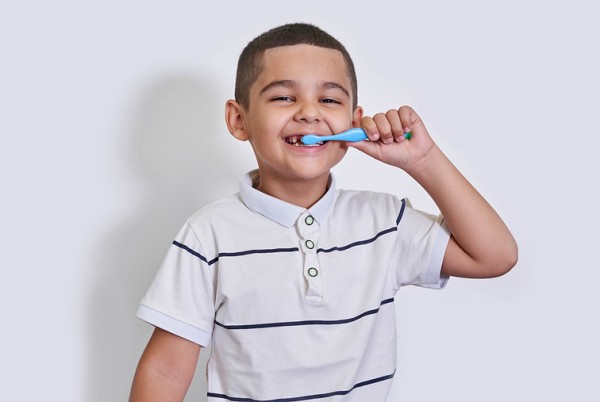
The molars are usually among the last teeth to fall out, and this usually happens after 9 years of age. The canines also fall during this stage, with the bottom canines going first and the top canines next. By age 13, most children have all their 28 permanent teeth. There are still four wisdom teeth left to erupt, and they come in between 17-21 years of age.
If you like, you can check out a summary of the baby teeth chart in this image:
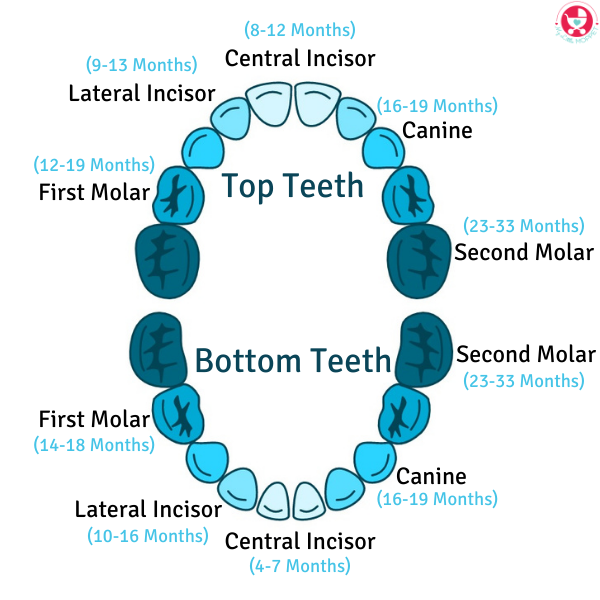
Teething Remedies for Babies

Teething is a normal part of development, and an inevitable part of getting new chompers! However, it can be uncomfortable as the hard tooth cuts through the gums, and can cause babies to get cranky. Here are some more symptoms of teething:
- Irritability and fussiness
- Increased drooling
- Reduced appetite
- Biting and chewing on hard surfaces
- Pulling on the ear
- Putting fingers in the mouth
You’ll notice that these symptoms are most experienced in the early months because it’s the first tooth that hurts the most. Once your baby has cut her first tooth, she’ll probably get used to the pain. When the molars begin to erupt, the symptoms may reappear, since the molars are bigger than incisors or canines.
If your baby is having trouble with cutting new teeth, you can try out some home remedies for teething. You can also make a variety of teething biscuits so baby gets some satisfaction from the crunch as well as nutrients in the bargain. If you’re considering getting a teething toy, check out our full guide to teethers for baby.
It is not recommended to apply numbing medicines or treatments on baby’s gums. The American Academy of Pediatrics advises against this, since they don’t help, and the excess drooling washes them away anyway.
Oral Care for Baby Teeth
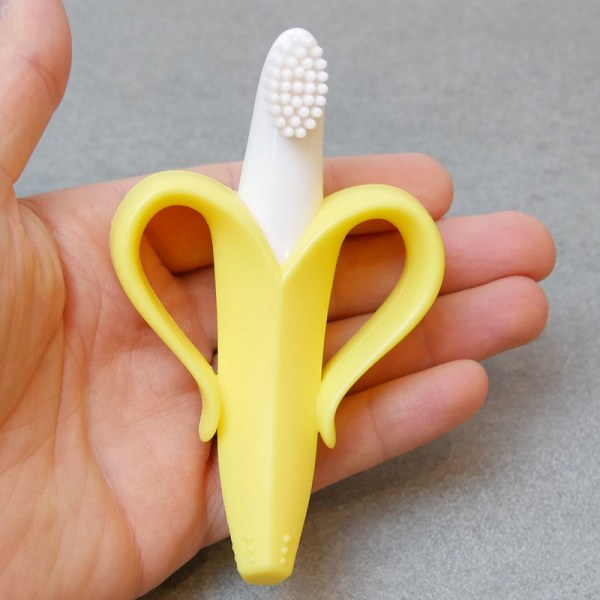
Stage 1 – Before the first tooth
You don’t have to wait for baby’s first tooth to start an oral care routine. You can start cleaning baby’s gums, and all you need is a clean, soft washcloth or gauze. Simply moisten the gauze and wipe down the gums twice a day, or after every feeding. This will help keep bacteria out of the mouth preventing infection.
Stage 2 – When the first tooth erupts
Once the first tooth arrives, you can move to a baby toothbrush. Get a brush specifically for babies of this age – such brushes often have a small head, a large handle and soft bristles. At this stage, you don’t need toothpaste; just wet the toothbrush with plain water and gently rub on the gums and teeth.
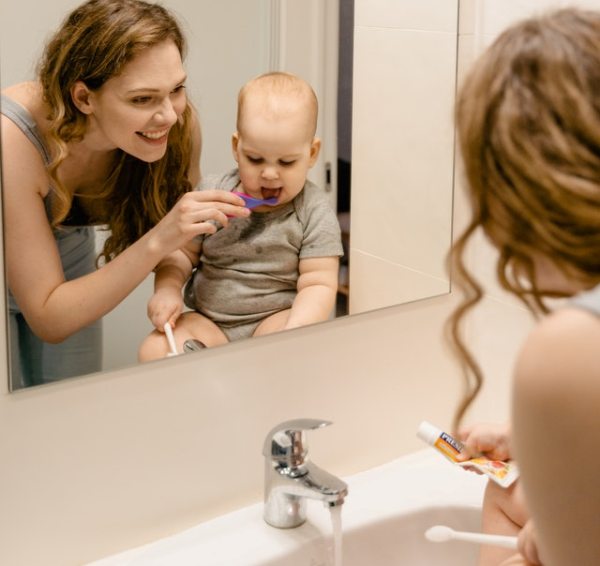
Stage 3 – When baby learns to spit
Usually between the age of 2 and 3, most of the baby teeth have come in and your baby is now able to eat a variety of foods. This makes oral care that much more important and this is a good time to introduce toothpaste in the routine. However, it is important to see that baby can spit out the toothpaste and not swallow it. Once baby crosses the third birthday, you can switch it up to a fluoride toothpaste, using an amount as small as a grain of rice.
Stage 4 – When all the baby teeth have arrived
Once all the baby teeth have arrived and you’ve got into a routine of brushing, it’s time to introduce flossing. Flossing is important, as it can get rid of tiny food particles that the brush can’t dislodge. For children, floss picks or sticks may be easier than string floss. If your child wants to brush independently, supervise them till you’re confident they can manage on their own, usually around 6 years of age.
Diet for Healthy Baby Teeth
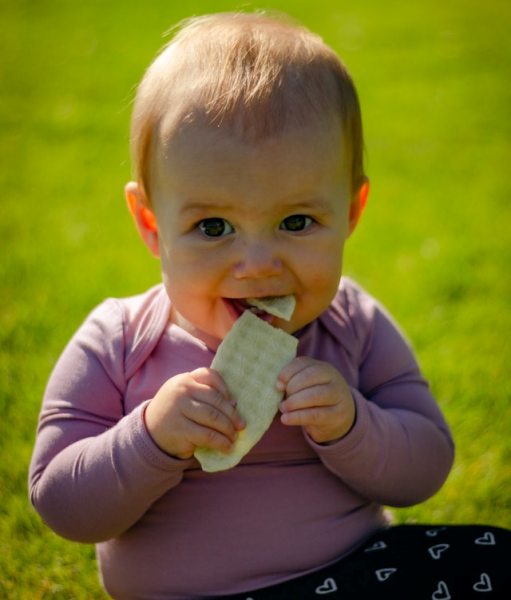
Along with a good oral care routine, it is important to ensure baby is eating the right kinds of foods that promote strong, healthy teeth and that you are avoiding foods that can cause decay. Here are a few tips to keep in mind:
- Cut down on snacks or mindless grazing. If your child needs to snack, limit it to not more than twice a day
- Offer water-laden fruits and vegetables like melons, celery and cucumbers as snacks
- Avoid sugary drinks or fruit juices and offer whole fruit instead
- Limit the consumption of sticky foods like bananas, raisins or honey that can stick to teeth
- Offer foods that trigger the flow of saliva like crunchy fruits or a variety of cheeses
- If you’re having dessert, serve it as part of the meal when there’s already more saliva in the mouth
- Avoid sugar-laden and processed foods – choose unsweetened versions
- When your child is thirsty, stick with plain water instead of juice, soda or even milk
- Include calcium-rich foods in your child’s diet like yogurt, milk or broccoli
- Let your child have a separate set of utensils exclusively for her use and avoid sharing with others
It can be difficult to avoid sugary or carbohydrate-rich foods completely, so whenever your child has them, take care to brush right after so you can get rid of any residue from the teeth. Another thing to consider is children’s medicines, which often contains sugar to make them more palatable to kids. If your child has a chronic medical condition requiring long term medication, it’s a good idea to ask your doctor for unsweetened versions. You may also need to brush more frequently to keep the mouth clean.
Baby Bottle Tooth Decay
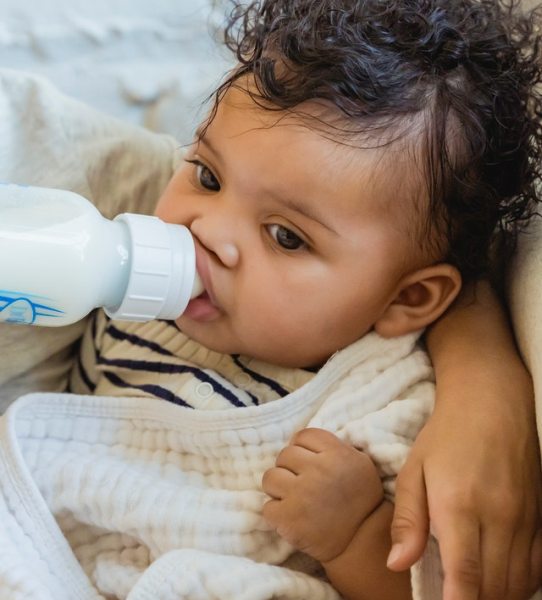
While junk food and excessive sugar can be a problem for toddlers or older kids, even babies are susceptible to tooth decay, due to baby bottle tooth decay. Even milk has sugars that can settle on the teeth and cause decay of baby teeth. Left untreated, this can cause infection and may even lead to removal of teeth.
In some cases, baby bottle decay can also cause speech issues, eating problems or crooked position of permanent teeth. You can avoid this by ensuring that your baby’s bottle is only filled with breast milk, formula, water or electrolyte solutions in case of diarrhea.
Avoid juices in the bottle, especially at bedtime. Saliva production decreases during sleep, and the bacteria have a field time all night, feasting on the sugar stuck on teeth. If your little one is used to a sweet drink before bed, try breaking the habit by diluting the drink with water, slowly increasing the dilution till your child can go to sleep without any sweet drink.
Baby’s first Visit to the Dentist
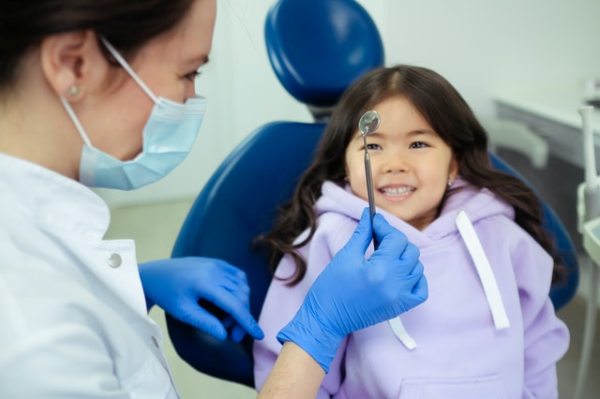
Most of us only think of the dentist when there is a problem with our teeth, and avoid it as a preventive measure. However, that isn’t a wise move, since regular dentist visits can pick up a problem in its early stages, leading to faster (and often less expensive) treatment.
Take your baby to the pediatric dentist within 6 months of the first tooth coming in, or at least by the first birthday – even if there aren’t any issues. A pediatric dentist is specially trained to treat children’s teeth, and is better for baby teeth than a dentist for adults.
During a visit, the dentist will check if all the teeth are developing properly, and he’ll also look for any signs of decay. Besides these, a good pediatric dentist can also pick up on any issues with bite, gum issues or other oral problems. They can also give professional advice about the kind of products to use for cleaning your baby’s teeth as well as tips for dealing with thumb sucking or pacifier addiction.
Toys and Activities for Kids to learn about Oral Health
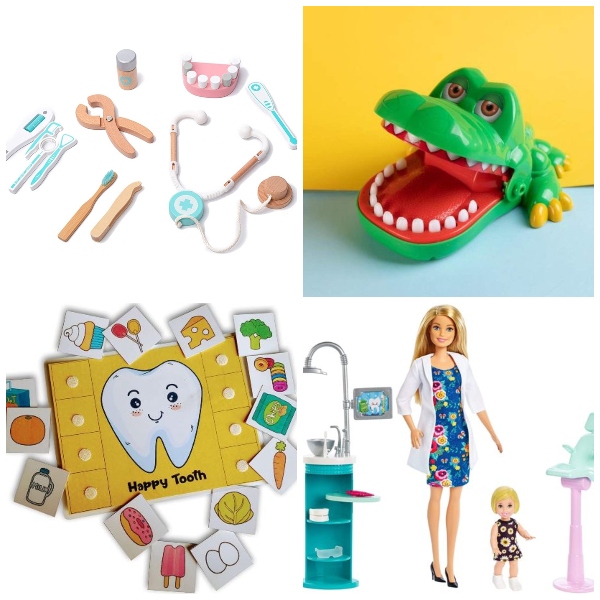
Pretend Play Dentist Medical Kit Playset
This is a great pretend play set for kids who enjoy being a dentist themselves. The set is made of wood, has pleasing colors and includes all the necessary equipment for hours of pretend play.
Crocodile Dentist Game
This is a fun game that even young kids can enjoy. It features a crocodile head with lots of teeth, some of which are bad. If you press on a bad tooth, the mouth jams shut and you’re out. It’s a fun way to introduce the conversation about oral health.
Happy Tooth Sad Tooth Sorting Activity
This is a simple game for young children to spread awareness about how important diet is for our teeth. The game helps them understand which foods can hurt their teeth and which ones are good for strong teeth.
Barbie Dentist Doll and Playset
Barbie dolls are available in a variety of professions, and that includes a dentist too! This set features a dentist Barbie, a little patient, and all the equipment needed to do a check up on the patient’s teeth!
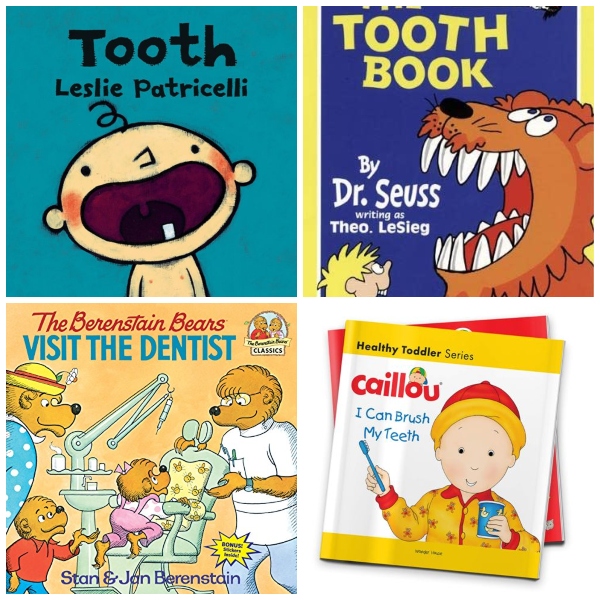
Tooth by
This is an adorable book in the series by Leslie Patricelli, where baby gets a new tooth. The book describes the discomfort of teething and empathizes with anyone going through it.
The Tooth Book by
In true Dr. Seuss style, this rhyming story is downright hilarious and is sure to have kids laughing! Amidst all the nonsense, you can still find some sensible information, packaged in a kid-friendly manner.
The Berenstein Bears Visit the Dentist by
The Berenstein Bears have all kinds of adventures, and this book is about their visit to the dentist. In this story, Sister’s tooth is about to fall off, and goes to the dentist. The book tries to mitigate some of the fear some children may have when visiting the dentist.
Caillou-I Can Brush My Teeth by
This book featuring the popular character Caillou focuses on kids who want to start brushing by themselves. In most cases, kids are ready before the parents are! This book helps bridge that gap and helps kids make the transition slowly.
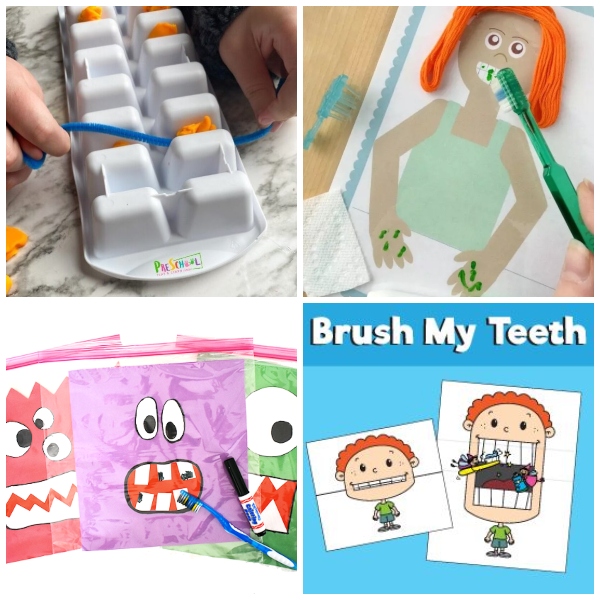
Playdough Flossing Activity
This ice tray activity from Preschool Play & Learn is perfect to learn about how flossing works, and gives a very visual idea of how food particles can be dislodged from teeth by using a floss pick or string.
Printable Brushing Busy Bag
Laly Mom has a free printable that helps you make a brushing busy bag that kids can play with and use over and over again.
Monster Teeth Brushing
Before kids start brushing their own teeth by themselves, it helps to practice on someone else – in this case, a monster! Check out Our Kid Things for instructions on doing this activity.
Brush My Teeth Folding Paper Craft
10 Minutes of Quality Time features an interesting paper craft that shows how deceptive appearances can be. Even if teeth appear clean from the outside, there may be lots of food particles and bacteria inside, requiring deep cleaning.
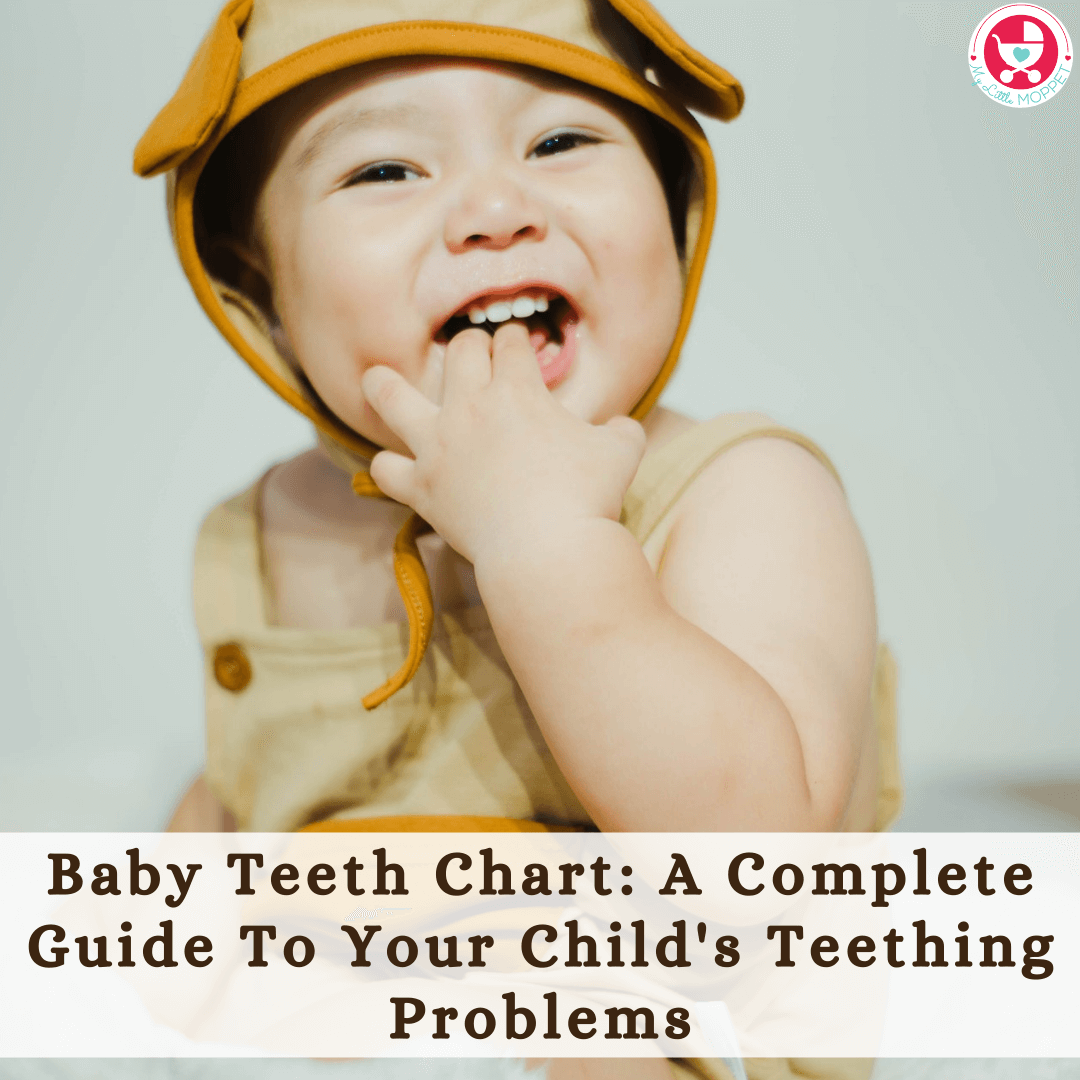
Even though babies get their molars much later, they can start chewing quite early, using just their gums to mash food. Always supervise children during mealtime, to prevent choking risks. Some foods pose a choking hazard even for kids with all their teeth, like grapes or cherry tomatoes.
While teething symptoms can be distressing, they’re harmless, and can be treated right at home. However, if the symptoms are accompanied by fever, rash, cough, diarrhea or vomiting, the cause may be something not related to teething. In this case, take your child to the doctor right away.
References:
Indian Journal of Dental Research
Journal of the American Dental Association
Buy Healthy Nutritious Baby, Toddler food made by our own Doctor Mom !
Shop now!
